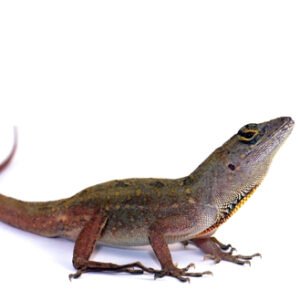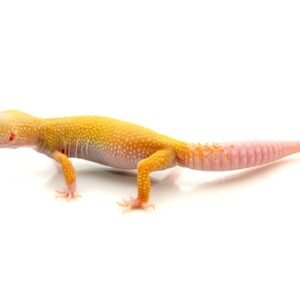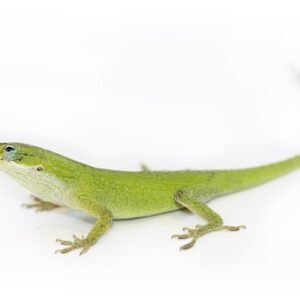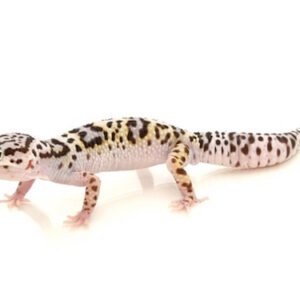The Ultimate Guide to Mack Snow Leopard Geckos: Care, Traits, and Breeding
Introduction to Mack Snow Leopard Geckos
The Mack Snow Leopard Gecko is a captivating morph of the well-known leopard gecko species, possessing unique traits that make it highly sought after by both novice and seasoned reptile enthusiasts. Originating from selective breeding efforts, the Mack Snow morph distinguishes itself through its striking coloration, usually featuring a stark white and black pattern that develops as they mature. This curiously enticing coloration is one of the primary reasons that collectors are drawn to Mack Snow Leopard Geckos, as the dramatic contrast sets them apart from typical leopard geckos. Their captivating appearance is further enhanced by various additional traits exhibited in specific breeding lines such as banding and spotting patterns.
Mack Snow Leopard Geckos are not only renowned for their aesthetic appeal but also for their temperamental characteristics. Generally displaying docile and friendly behaviors, these reptiles are well-suited for handling, making them a popular choice for individuals looking to enjoy a pet that is both visually appealing and sociable. Their relatively easy care requirements further contribute to their appeal among those new to reptile ownership, as well as experienced herpetologists seeking to expand their collections. Understanding these lizards’ specific needs, including habitat, diet, and climatic considerations, is paramount for ensuring their health and longevity.
Before embarking on the journey of Mack Snow Leopard Gecko ownership, potential keepers should familiarize themselves with the essential aspects of care and maintenance. Grasping the fundamental details of their care can prevent common pitfalls associated with reptile keeping. With patience and knowledge, new owners can enjoy the many rewarding aspects of being a Mack Snow Leopard Gecko caretaker, ultimately fostering a fulfilling relationship with these extraordinary creatures.
Care Requirements for Mack Snow Leopard Geckos
Mack Snow Leopard Geckos require a carefully designed habitat that mimics their natural environment to thrive. The first step in providing adequate care is to establish a suitable enclosure. A terrarium of at least 20 gallons is recommended for a single gecko, allowing plenty of space for movement and exploration. The enclosure should have a secure lid to prevent escapes, as these geckos are known to be avid climbers.
Heating is critical for the health of Mack Snow Leopard Geckos. The enclosure should have a temperature gradient, with a basking area ranging from 88°F to 92°F (31°C to 33°C) and a cooler side around 75°F to 80°F (24°C to 27°C). Utilizing an under-tank heat mat can be effective for maintaining the necessary warmth. Additionally, a thermostat is essential to avoid overheating, as high temperatures can lead to stress and health issues.
Lighting is also an important factor. While leopard geckos are nocturnal and do not require UVB lighting, a proper day-night cycle should be maintained using a light source that simulates natural day conditions. This not only supports their activity patterns but also helps in regulating their circadian rhythms.
The choice of substrate can impact both the gecko’s health and ease of maintenance. Recommended substrates include reptile carpet, paper towels, or ceramic tiles, which are easy to clean and do not pose a risk of ingestion. Avoid using sand or loose substrates, as these can lead to impaction if ingested.
Feeding should focus on a diet consisting of live insects such as crickets, mealworms, and dubia roaches, supplemented with a high-quality calcium and vitamin powder. Offering food every other day is ideal for adults, while juveniles may require feeding daily. Finally, hydration is critical; providing a shallow dish of clean water and misting the enclosure occasionally will help ensure proper hydration. Regular monitoring of your gecko’s health and behavior is essential, and consult a veterinarian for any concerns to optimize their care.
Behavior and Temperament
Mack Snow Leopard Geckos exhibit a variety of behaviors that are essential for both their well-being and that of their owners. Understanding these behaviors contributes significantly to a harmonious relationship between the pet and the keeper. Generally, these geckos are known for their docile nature; they are often easy to handle and tend not to demonstrate aggressive tendencies. This characteristic makes them ideal pets for both novice and experienced reptile enthusiasts. However, it is crucial for owners to recognize the individual personality traits of their gecko as these can differ widely.
Social interactions among Mack Snow Leopard Geckos are usually peaceful, particularly when kept in pairs or small groups of the opposite sex. Nonetheless, housing multiple males together can lead to territorial disputes. Therefore, understanding their social dynamics is important for ensuring a stress-free environment. When handling a gecko, approach it gently and with care. Allow the animal to come to you, minimizing any sudden movements that may startle it. Signs of stress or discomfort can include tail shaking, rapid movement, or attempts to escape. Compromising the gecko’s comfort could not only jeopardize the handling experience but may also affect its long-term health.
Establishing trust takes time and effort. Start by spending time near the enclosure without handling the gecko. Gradually introduce your presence by offering occasional treats to foster positive associations. Over time, this method encourages a sense of security and familiarity, which is vital for the gecko’s comfort. It is unfortunate that some myths surround leopard gecko behavior, suggesting they are entirely solitary creatures that do not require human interaction. In reality, they thrive on gentle handling and positive experiences, leading to a more engaged and well-socialized pet. Proper understanding of these fascinating reptiles can significantly enhance both their quality of life and the joy they bring to their owners.
Breeding Mack Snow Leopard Geckos
Breeding Mack Snow Leopard Geckos requires a thoughtful approach to ensure the health and well-being of both the adults and their offspring. Initially, breeders must assess the genetic backgrounds of their geckos, as understanding genetics plays a crucial role in producing desirable traits and morphs. The Mack Snow morph is notable for its unique coloration and patterns; thus, pairing individuals with complementary genetics can enhance the likelihood of achieving visually appealing hatchlings.
Before breeding, it is essential to prepare suitable environments for both the males and females. This includes providing ample space, optimal temperature gradients, and proper humidity levels to promote healthy mating behaviors. Breeders should also monitor the dietary needs of their geckos leading up to breeding, ensuring they receive a balanced diet that supports reproductive health. After the successful pairing, females will lay eggs; this marks the beginning of the incubation phase.
Incubation conditions are critical for the developing embryos. The eggs should be placed in a well-ventilated container filled with a moist medium, such as perlite or vermiculite. The temperature of the incubator is a determining factor for the sex of the hatchlings; generally, maintaining a temperature around 82-85°F will yield a balanced sex ratio. During this period, careful monitoring of humidity levels and temperature is necessary to minimize the risk of egg mortality.
Upon hatching, the care of the hatchlings is paramount. This includes providing appropriate housing, nutrition, and a stress-free environment. Hatchlings should be offered gut-loaded insects sized appropriately for their small mouths. Responsible breeders must also consider the long-term implications of breeding practices, including the importance of maintaining genetic diversity and ensuring the health of the population. In doing so, they not only contribute to the traits sought after but also promote ethical breeding standards within the reptile community.





